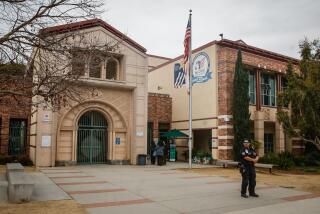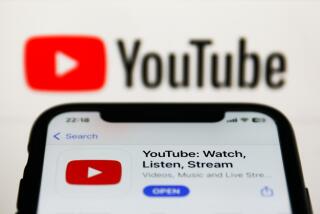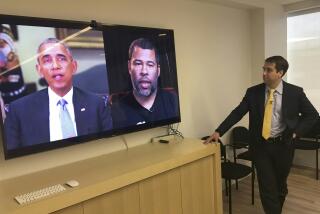YouTube’s new face-blurring tool designed to protect activists
On Wednesday, YouTube launched a new tool that allows users to blur all the faces in a video before uploading it to the site.
Admittedly, we see comedy potential here--”the faces of these kittens have been blurred to protect the innocent”--but the service is not designed for fun and hijinks.
Instead, it comes after years of lobbying from activist groups that want to use YouTube to display human rights footage, but also want to protect the identities of the people depicted in the video--whether they be protestors in Syria or victims of rape in America.
“We are at an evolution point where pictures and video are the most powerful ways to get our stories across, but people need to have the option to protect themselves,” said Sam Gregory, program director of Witness, which provides support to people who use video for human rights work.
Witness is one of the curators of YouTube’s Human Rights channel that launched in May, and also worked with the site to develop the face-blurring tool.
To use the face-blurring tool, simply upload a video and select the “Blur Faces” button in the Video Enhancements tool. YouTube will then run an algorithm that should detect all the faces in the video and blur them out.
The tool is not perfect. As Gregory points out, users do not have the option of selectively blurring faces--for example, blurring out the face of a person being beaten by police forces, but not the faces of the people doing the beating.
And in a blog post describing the new feature, YouTube admits that it is still “emerging technology” and may sometimes have difficulty detecting faces depending on the angle, lighting, obstruction and video quality.
But if you have any doubt that a tool like this is necessary, then we suggest you read “The camera in Homs: a double-edged sword,” a story by an activist in western Syria who has been using his camera to document what is happening in his country.
Here’s a quick excerpt:
“Many of my friends were arrested for protesting. However they weren’t arrested from the protest sites, but rather from the checkpoints spread across the city.
“But how did Assad forces know they protested?
“Government forces have special teams dedicated to monitoring protests that we film and upload to the internet.”
ALSO:
Google+ gets more likes than Facebook in user survey
Armchair expeditions to Antarctica, courtesy of Google Street View
Raindropping app delivers hyper-local rain forecasting to your phone
More to Read
Inside the business of entertainment
The Wide Shot brings you news, analysis and insights on everything from streaming wars to production — and what it all means for the future.
You may occasionally receive promotional content from the Los Angeles Times.











